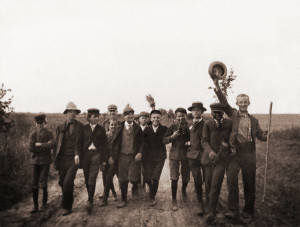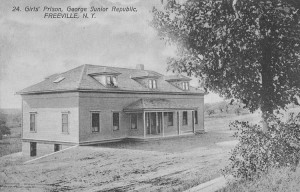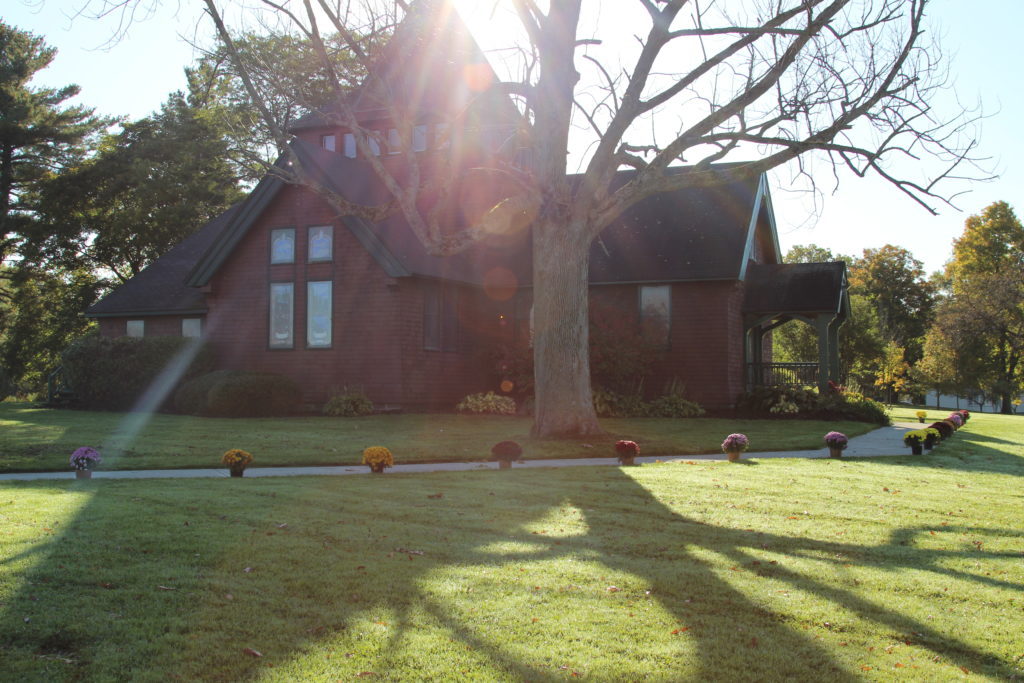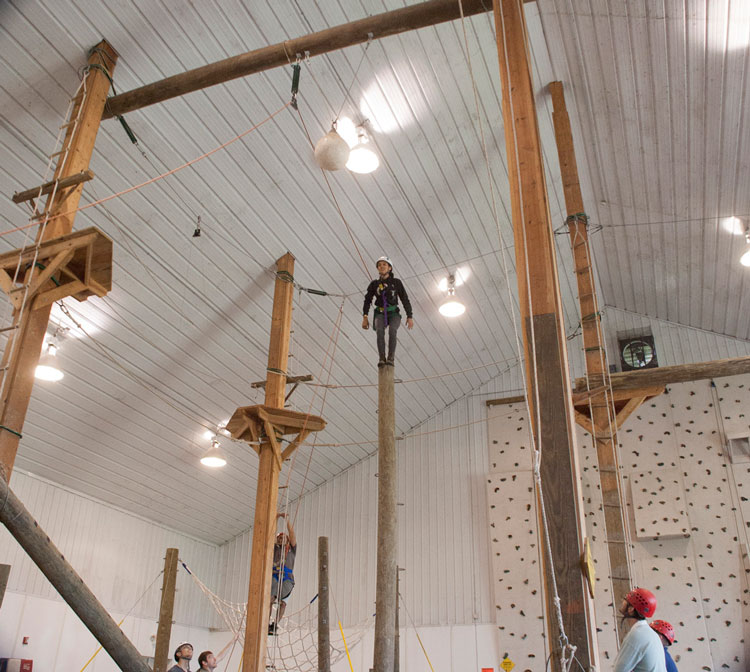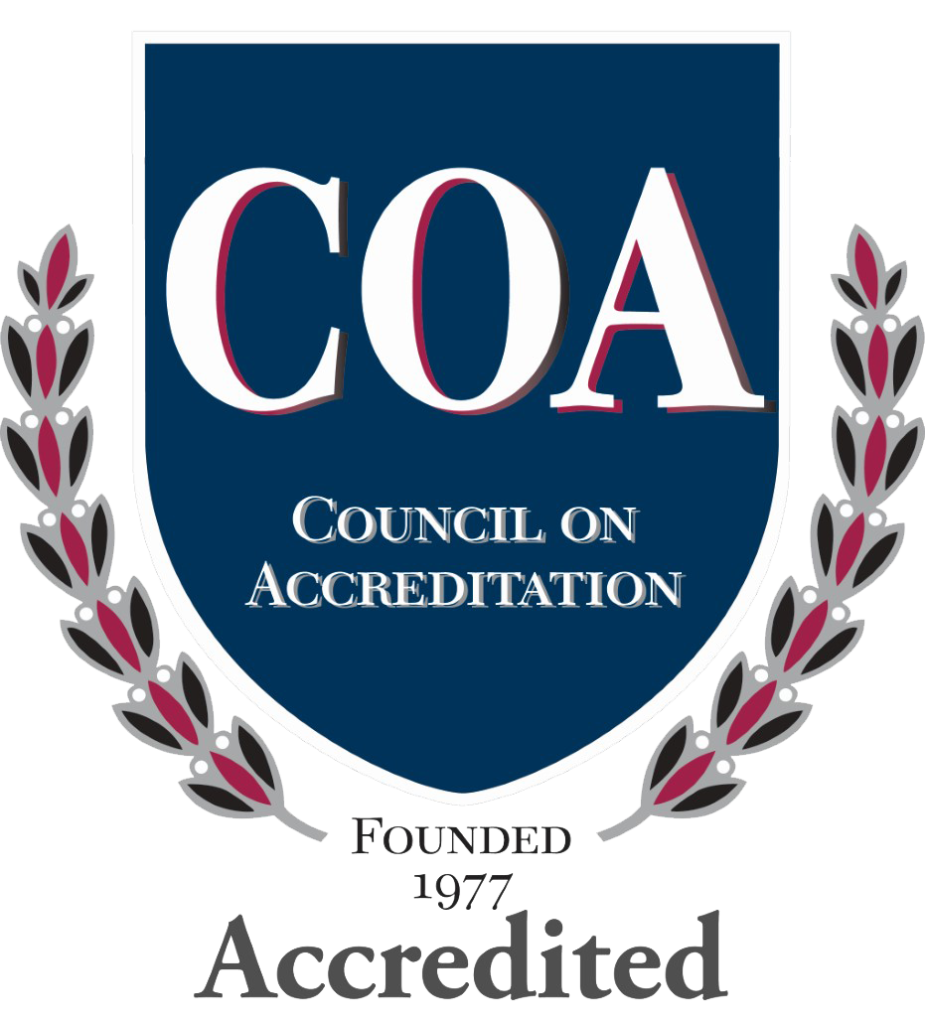About The William George Agency for Children’s Services
Mission
We are committed to providing a safe and caring residential environment supported by proven, therapeutic, clinical and medical care for at-risk youth.
Vision
Recognized as among the best in offering innovative, highly regarded programs to serve high need, specialized populations who have historically been underserved.
Values
To care first about young people while helping them develop the attitudes, social skills, and self-direction enabling them to become contributing members of the community. To engage, respect, empower, and partner with families to support their efforts in successful reunification and family preservation.
William George, founder of the George Junior Republic, was born on a farm in West Dryden, New York. When he was fourteen, he and his parents moved to New York City. As he grew older his parents wanted him to attend college, but he rebelled and went into business for himself.
In the late 1800’s, NYC conditions were cramped and unhealthy. Mr. George became concerned with the social conditions of the great city. He walked the slums of New York and talked with the boys in the streets. He organized the boys into club and mission houses, and also organized clubs for girls. Mr. George believed that if young people could live in a free, wholesome atmosphere, they could use their energies constructively and become adults with positive futures.
Mr. George was compelled to bring boys out to his farm in Dryden when he read an article in the April, 1890 issue of Evening World. This article told of a little boy in the New York slums who saw an orange peel and chased it down the street thinking it was a flower. Mr. George wanted this boy and others to see real flowers and real living things.
The New York Herald Tribune Fresh Air Fund provided funds for the transportation of fifty children (40 boys and 10 girls) to have a summer vacation with Mr. George. He had no money but nearby farmers provided a place to live and food for the youths. For two weeks the youths lived in a camp of tents in Freeville, New York. Mr. George continued the camping program for three consecutive summers with more and more campers, support from people in Cortland and Elmira, and growing problems.
By the end of the third summer, Mr. George was very disturbed to see the young people taking food, clothing and luxuries, but never a thought of giving back. They were taking everything they received for granted, and he needed a solution. He decided they needed to learn how to earn their own living, and he developed the motto “Nothing Without Labor”. This was the first motto developed for the Republic and it is still in use today. The first name given to the G.J.R. was the Freeville Fresh Air Camp.
The summer of 1894 was radically different. No money was used for sports; instead it was used for picks and shovels. Mr. George told the citizens to build a road in front of the Fresh Air Camp. He said they would learn responsibility and feel proud. The youths were happy and energetic at work, but only for a few days. Then, a shipment of clothing came in and instead of giving the clothing out, Mr. George suggested they work for it. Finally, one small boy worked for his clothing and soon others followed suit. A change was noted. The young people took far better care of the clothing they earned compared to those they received for nothing. Mr. George was proud.
Mr. George wrote up rules for his community to follow, but they were not followed. Then one day some of the hard-earned clothing was stolen. The owners of the clothing went to Mr. George and he told them to take matters into their own hands. The youths found the thieves and among themselves conducted a trial. This idea has evolved through the years to the idea of citizen “self-government”; today residents are represented by our Campus Council as part of our Youth Leadership Program.
On July 10, 1895, the founding date of the G.J.R., five boys out of two hundred campers decided to stay through the winter. This was the beginning of what we have today: a therapeutic community of youths, growing and maturing together responsibly.
The George Junior Republic continued to evolve over many years. There were good times and bad. The one constant was providing opportunities for youth to return to their home communities as contributing members.
In 2005 the George Junior Republic changed its name to The William George Agency for Children’s Services. The new name, it is felt, gives society at large a greater understanding of the work we do.
Today’s residential programs preserve the Junior Republic’s ideals of general fitness, social development and well-roundedness, in which responsibility is treated more as an opportunity than a burden – while providing more focused clinical oversight and treatment, and a strong educational emphasis.
Although the Agency has seen many programmatic changes over the years as the needs of children have evolved, one thing has never changed, namely the enduring efforts of caring adults working to improve the lives of disadvantaged, troubled youth. Expansion in the service of providing additional treatment opportunities to children in need has been an Agency priority since the early 1990’s. The Agency’s Board of Directors, in concert with our senior leadership team, have for the last 20 years made a concerted effort to serve high-risk, high-need populations who have historically been underserved in New York State. This expansion has taken the form of ten newly constructed, state of the art, residential homes, and many new and innovative programs.
In 1996 when Barber Cottage opened, The William George Agency became the first private residential treatment center in New York State to be licensed to provide sex offender specific treatment to adolescent males who have engaged in sexually abusive behavior. We are recognized as a leader in the field of adolescent Sexually Harmful Behavior treatment.
In July 2000, The William George Agency became one of only three private residential agencies in the state to open an OASAS licensed outpatient chemical dependency treatment clinic at VanClef Cottage serving the needs of our residential population. It has been long recognized that the rate of diagnosable alcohol and/or substance abuse among adolescents entering residential treatment is at least 60%, and for many youngsters, it represents a primary treatment issue. VanClef currently serves up to 100 residents at any given time, and has consistently received superior performance reviews during OASAS program audits.
The fall of 2005 marked the opening of our DD and ID-ED programs for youth with both intellectual disabilities and serious emotional, psychiatric disturbance. Previously, many of these youth were mixed in with youth with normal cognitive functioning, and were often exploited or isolated. Our DD and ID/ED programs offers many specialized services and supports designed to improve their adaptive daily living skills, as well as their capacity to function independently.
In November, 2011, we opened the Seidell Youth Centered Recovery Program for adolescent males who are dually diagnosed with alcohol and/or substance dependence and a co-occurring mental health disorder. Most of the young men served in this program have a history of failed inpatient treatment experiences in OASAS licensed short-term residential programs as a result of their pattern of acting out behavior. The structure of our residential program is designed to offer these young men a safe, stable, and predictable living environment which will support and encourage their investment in treatment while our OASAS licensed clinic provides intensive chemical dependency services. Since the program’s inception on November 1, 2011 through the present date, the utilization rate for this program has been 94%. In the spring of 2014, we added six beds to our Youth Centered Recovery Program.
In December, 2011, we opened our Hard to Place Girl’s program. The Agency had not served adolescent females in almost twenty years, but in response to overwhelming and persistent consumer demand, we made the decision to serve girls with a history of trauma and abuse. The program has been highly utilized and continues to be in great demand.
In the winter of 2014, we developed the Hard to Place Intermediate Care program for boys who clinically no longer require an HTP level of care but whose social skill deficits and emotional dysregulation impede their ability to successfully negotiate a more normalized peer environment. As such, it represents a transitional program between Hard to Place and discharge to the community.
In October of 2018, Raise the Age (RTA) Legislation became effective which raised the age of criminal responsibility to 17-years-old and on October 1, 2019, the age of criminal responsibility was raised to 18 years of age. This legislation ensures that young people in New York who commit non-violent felonies receive the intervention and evidence-based treatment they need. The William George Agency was one of 13 agencies in New York State selected to provide services to this specialized population, and is currently licensed for 16 RTA beds.
Between 1993 and 2019, the Agency has grown from approximately 45 beds to our present licensed capacity of 193 beds as part of our on-going commitment to serve at-risk youth in New York State.
Although having spent the majority of her career as a financial and insurance executive, Helen spent over thirty years as a member of the Agency’s Board of Directors with an unwavering passion and commitment to the Agency’s mission. Graduating with a B.A. in Psychology from St. Johns University, Helen ultimately went to work on Wall Street and dedicated her evenings volunteering at a local child care agency. Over a distinguished career, Helen has proven to be an effective, solution-oriented leader.
Superintendent
Sonia Apker has dedicated her career to the George Junior Republic Union Free School District, having worked as a special education teacher, curriculum coordinator, and principal before being named Superintendent in 2013. Sonia came to the District as a special education teacher in 1992. She has Master’s in Literacy and a Certificate of Advanced Studies in Educational Administration from SUNY Cortland. She has been integrally involved in the District’s growth, development and educational innovations over the past twenty-six years. Sonia also serves as officer of the Special Act Coalition.
Gabriel began his career as a childcare worker, group home foster parent, and youth prevention worker following graduating from Vanderbilt University. These experiences led him to pursue studies in clinical psychology, graduating with a doctorate in 1994 from Indiana State University. He became a licensed psychologist in 1996. Gabriel worked in the field of forensic psychology for several years before joining the Agency in 1997 as the first Director of Special Services. In this role he helped develop the specialized hard to place programs. After 14 years of service he left the Agency and joined Cornell University where he supervised the University’s Faculty and Staff Assistance Program. He subsequently returned to the Agency in 2022 and assumed the role of Chief Program Officer.
Danielle started at the Agency in 2008 as a Behavioral Health Clinician in our Institutional Program and transitioned to our Youth Recovery Program in 2012 after completion of her Master in Social Work degree from Binghamton University. Prior to her current role, Danielle was the Program Director for the Agency’s outpatient Substance Use Disorder Program licensed by the NYS Office of Alcoholism and Substance Abuse Services. Danielle is a Licensed Clinical Social Worker, a Credentialed Alcoholism and Substance Abuse Counselor, a Certified Animal-Assisted Intervention Specialist, and an EAGALA Certified Mental Health Professional. She completed a fellowship program in the Executive Leadership Program at the Silberman School of Social Work of Hunter College in 2018. Ms. Chase is responsible for the successful leadership and management of the Agency’s non-residential operations and Compliance Program.
Anita joined the Agency in 2019 as the Comptroller and also serves as Treasurer for the George Junior Republic Union Free School District. Anita has been in accounting for over 22 years and held several positions in accounting from Corporate Internal Auditor, Senior Accountant, Accounting Manager and Controller. Her previous position was with a multi-billion dollar leading global water technology company with operations in more than 150 countries. Anita was a Global Business Services Controller for 12 separate ledgers in UK, Canada, Poland and USA. She holds an MBA with a concentration in Accounting and a Bachelor’s degree in Accounting.
Dave began his career at The William George Agency in the Fall of 1993 after graduating from Ithaca College with a degree in Sociology with a concentration in Criminal Juvenile Justice. Dave worked as a Residential Counselor for approximately two years before becoming a Cottage Manager and then a Cottage Director for nine years. During that he time he attended Marywood University to receive his Master’s Degree in Social Work in 2001. Dave has served the Agency since as the Director of Institutional Services and most recently as the Director of Residential Services.
Director
Justin has his Bachelor’s degree in psychology from Ft. Hays State University and has earned his Credentialed Alcoholism and Substance Abuse Counselor designation through the NYS Office of Alcoholism and Substance Abuse Services Dependency Program. Justin began his career as an intensive probation officer allowing him to develop and facilitate a first of its kind methamphetamine specific treatment program where client revocation rates were four times lower than the statewide average. While in the department, Justin became a parole officer, senior supervising officer, and eventually, the treatment coordinator for a sixteen county area. Justin began as a chemical dependency counselor at The William George Agency in 2007. In 2011, Justin helped to develop the Youth Centered Recovery Program. The program utilizes an integrative approach to treatment that incorporates mental health, family, and substance treatment in an attempt to address the whole needs of client.
Director
Ray has over 30 years of experience working with at-risk children and families as well as 13 years with The William George Agency. Ray is responsible for the administrative and clinical over site of the Therapeutic After-School Program which is a preventive service program that provides clinical support to children and families that reside in Tompkins County with the primary goal of keeping families intact, while assisting them to better manage presenting needs.
Tara started at the Agency in 2021 in the IT Department as the Data Systems Programmer after having spent the previous 3 years at Corning Incorporated as an IT Technician. During her time at the Agency she has been responsible for creating multiple data reporting dashboards used across campus, currently by the Residential, Support, Clinical, Medical, Quality Assurance, and OASAS departments. She has also been essential to the development and ongoing maintenance of the new 29-I Medical Billing process. Tara holds two BS degrees from Mansfield University of Pennsylvania; one Bachelor of Science in Computer Science and one Bachelor of Science in Applied Mathematics, as well as a Minor in Business Administration.
Patricia has a diverse background in the for-profit and non-profit sectors. Prior to joining the Agency, she was the communications director for a CT-based community foundation and before that she was the corporate communications manager for an instrument manufacturer in the life sciences industry. In her early career, she worked for private nonprofit organizations supporting the personal and professional growth of individuals with disabilities. Patricia holds an MA in Leadership and a BA in English.
Hilary started at the Agency in 2019 as the Director of Hard to Place Services. In this role, she provided administrative and clinical oversight to our Hard to Place Boys population as well as the Raise the Age Program, for a period of time. Prior to joining the Agency, she worked as a mental health clinician in an Office of Children and Family Services facility as well as a group home for adolescents. Hilary is a Licensed Clinical Social Worker and earned her Master’s in Social Work from Binghamton University in 2015.
Christ Chapel
The chapel was designed by Auburn, NY native Julius Schweinfurth and built in 1901. It was renovated in 1995 and is used by local congregations and the community at large for worship, special events and weddings.
If you’d like to use the Christ Chapel for your next event please contact:
CJ Brown
(607) 844-6202
brownc@gjrmail.com
*Due to upcoming construction, we are not booking any events for 2024/25 at this time.
James Purcell Adventure Based Counseling Ropes Course
The Ropes Course is a series of activities and challenges on both low and high elements designed to encourage teamwork and personal confidence. Groups learn skills such as cooperation, problem solving, leadership, goal setting and trust while trained instructors facilitate the activities.
If you’d like to hear about the different programming packages we offer please contact:
Laurene Payton
(607) 844-6370
paytonl@gjrmail.com
 Office of Children and Family Services http://ocfs.ny.gov/main/ |  Office of Alcoholism and Substance Abuse Services https://www.oasas.ny.gov |  New York State Education Department http://www.nysed.gov/ |
